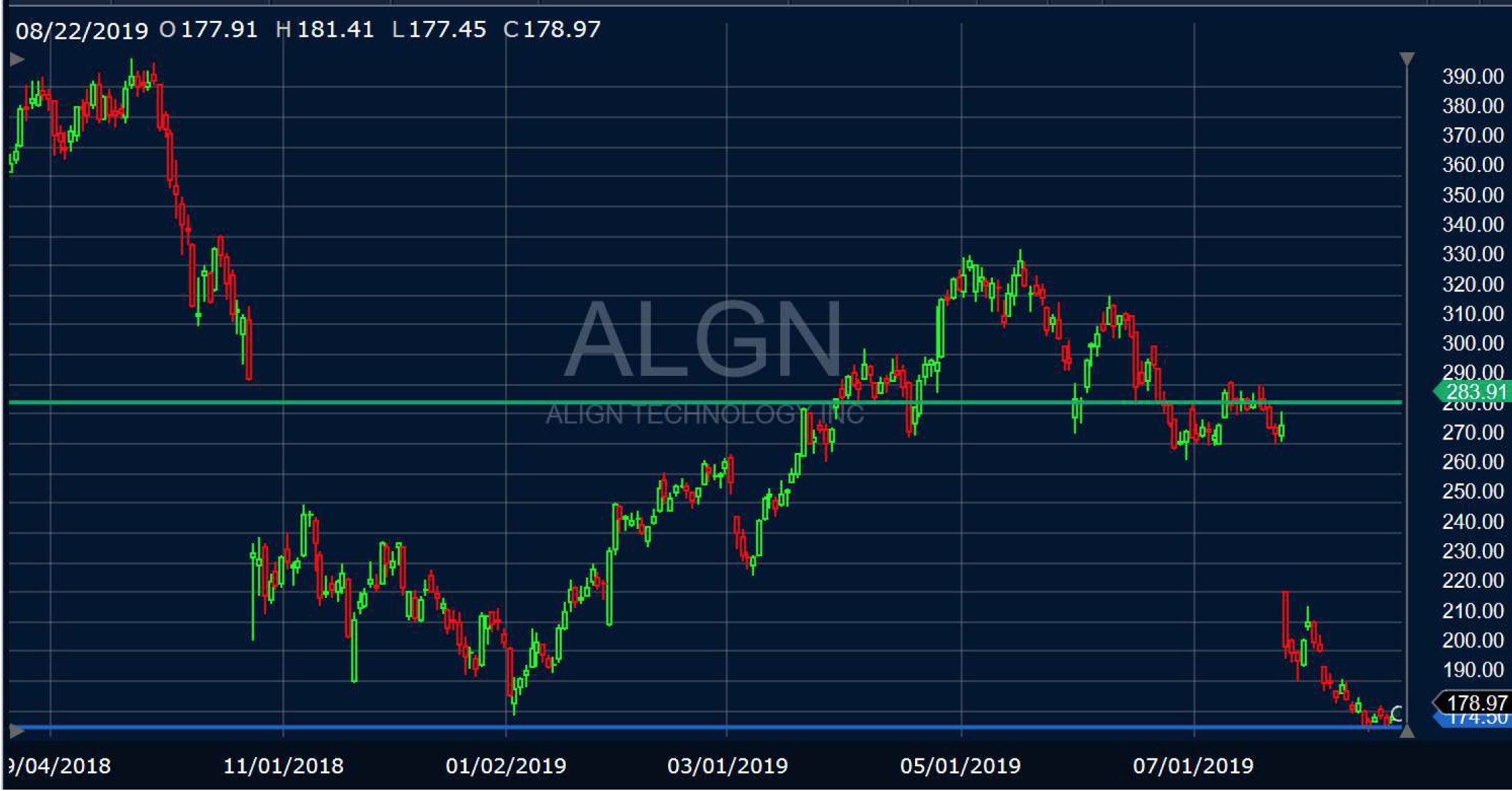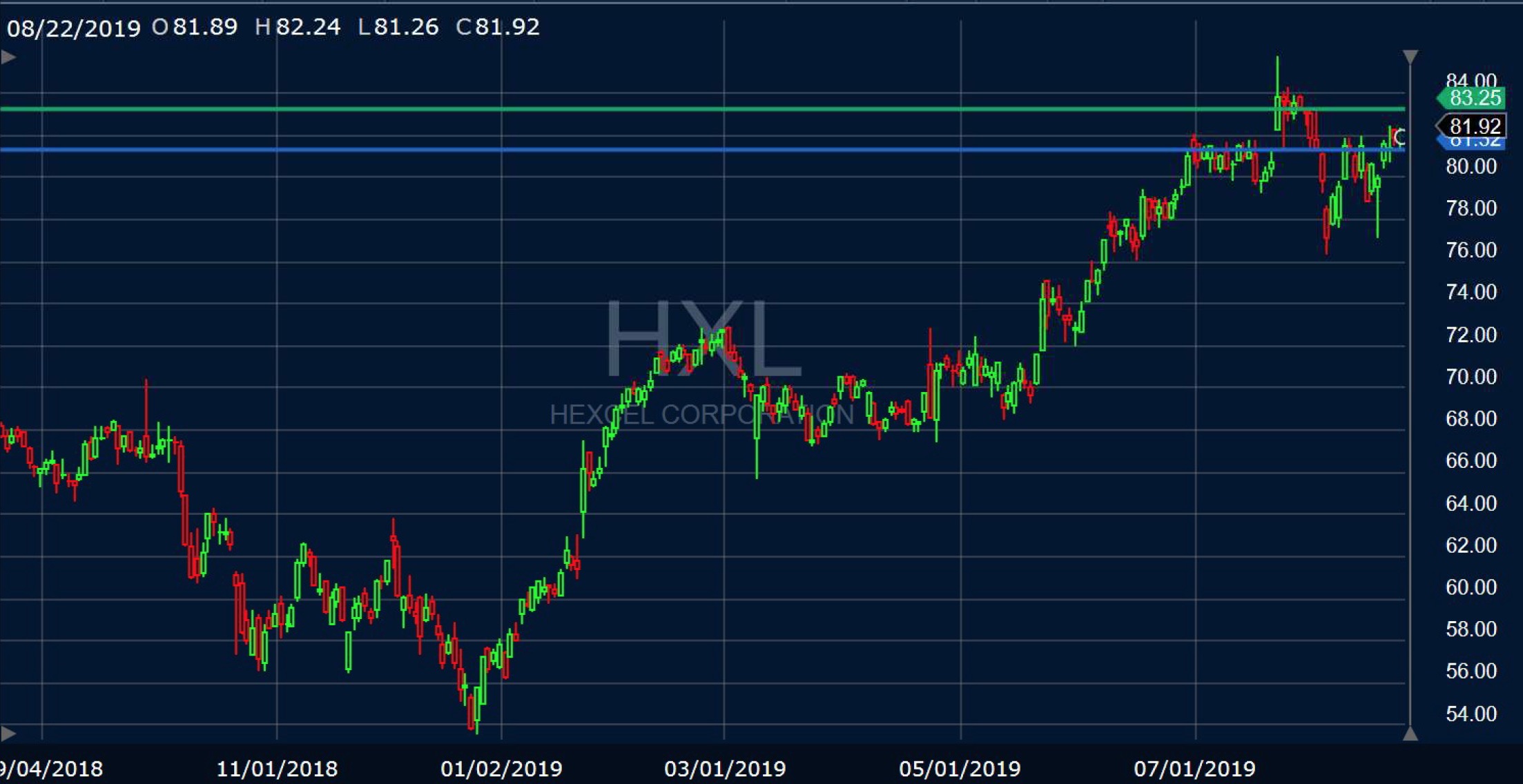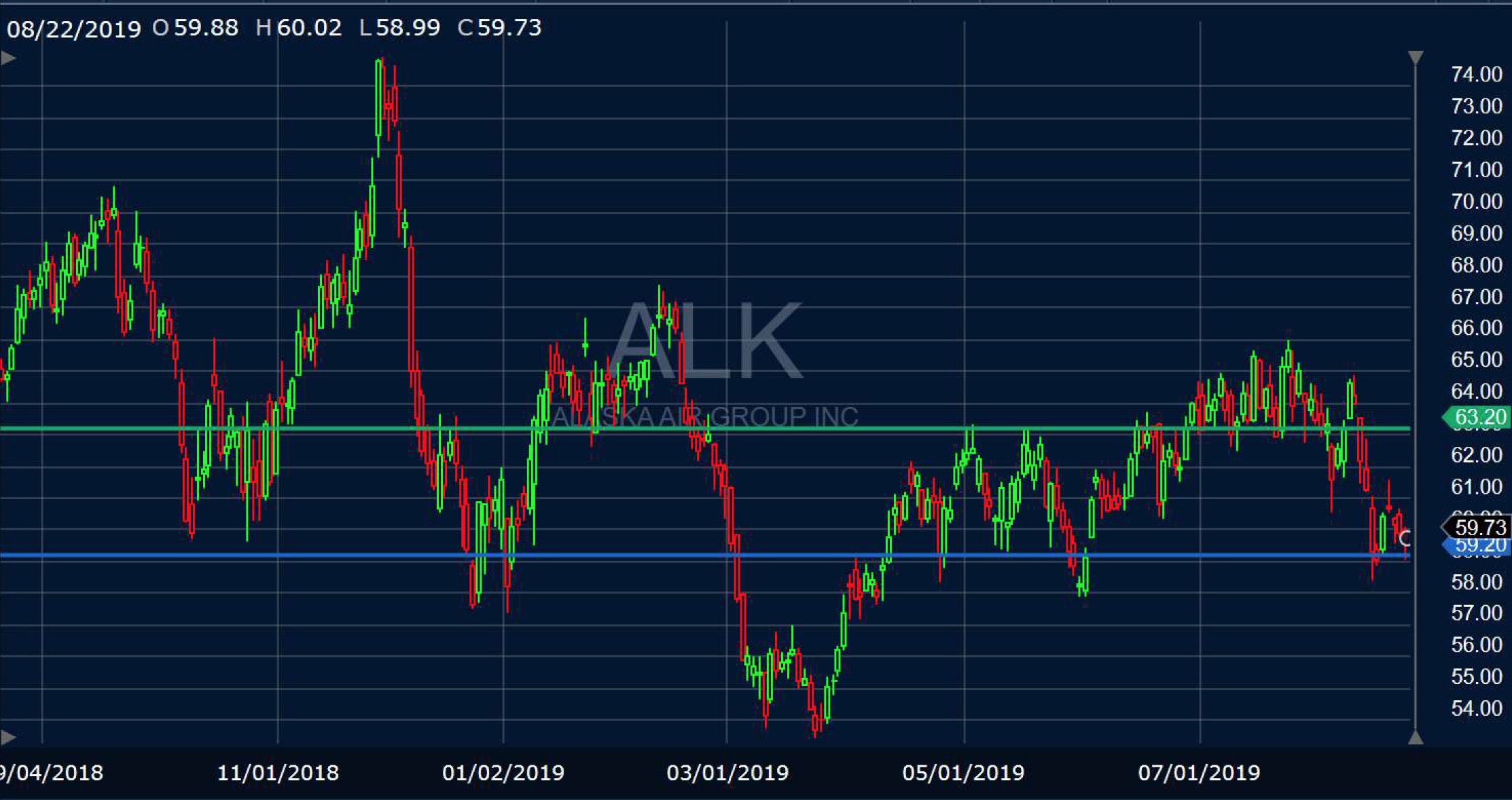by Harry G. Katica, Saut Strategy
Sectors and Stocks (08-23-2019)
Another Friday, another inflection point. Faced with a potential meltdown in markets after weak German economic reports last Wednesday, one central banker after another whispered to markets that a big wave of easy money was on its way.
Stocks cheered the news, as a coordinated stimulus measure might be the only thing that can save the global economy right now. On top of already slowing company earnings, the politicians have weighed down the financial markets with trade wars and Brexit. Fed Chairman Powell will have everybody’s attention when he speaks at Jackson Hole on Friday.
It would be perfectly understandable to the electorate if there was a short recession. Demand slows down so inventory levels are brought into line. Expenses are tightened to trim off extra staff. Pent-up demand stocks to build. Stocks go down for 3-6 months, and the cycle starts over again. It’s like going on a diet to shed some of the extra pounds picked up during the Holidays.
Except now, the business cycle unfolds publicly, on television, the internet, in presentations and press conferences. News gets immediately digested by the markets, which hate words like patience or uncertainty. Add in the chorus of Talking Heads calling for a recession and a President who wants to make sure we don’t have one. It puts a lot of pressure on central bankers.
My guess is that the “recovery” we get from the next round of stimulus will be spotty. Without time to re-build demand, some industries will bound back. Others won’t. There will be more news of central bank action, mixed economic data, and another earnings season in two months. In other words, more of the same sloppy range bound action that have characterized markets since early May, and January 2018 before that.
Under this scenario, I would expect the same rotation at the sector level. There may be stretches of high correlations, where all stocks seem to go up and down together on statement days. This kind of wide-ranging activity is common during inflection points. It could go on for a while.


Sector Spotlight
When the market gets scared and goes down quickly, investors don’t discriminate. They take everything down. There is often a capitulation day (or more) where 90% of securities go down (or up) and all sectors are in the red (or green). The market has been through a few already in August. It’s a sign that investors have hit the reset button and are seeking a new story line to drive stocks higher.
That story is a fresh global easing effort to give the global economy a much-needed adrenaline shot. Rumors started flying last Thursday, after another Tweetstorm left investors thinking the worst about tariffs. Central Bankers were concerned about a lack of confidence and wanted to provide re- assurance. The resulting 3% rally lifted all sectors in unison.
While everyone is screaming about the upcoming recession, stocks are taking off in a classic early cycle move. Tech, Consumer Discretionary, and Industrials – the risk-on sectors - are providing leadership. Utilities, Real Estate, and Consumer +

Staples were the worst performing sectors, but were still up on the day. This is the sign of a healthy market. Everything is going up, the screen is fill with green, the sectors are up in a logical fashion.
Once concerning aspect of this week’s action has been the failure of two key groups to participate. Semiconductors (SOXX) have done their part (see chart to right). Transportation (IYT) and Biotech (IBB) have barely participated. It will take time to see if these are temporary divergences, or something more serious.
Similarly, sector analysis should be revealing in upcoming weeks. If the Bull is to get fresh legs, it will need consistent participation from cyclical and defensive groups. That may be a challenge considering that Financials are buckling under the weight of an inverted yield curve, Energy is still dealing with over production, and Health Care faces legal and regulatory issues.
Transportation stocks (DJT or IYT) don’t seem to be getting the message that the economy will recover. While they did manage a 5% recovery Friday and Monday, there was not much follow through after that. Air Freight (FDX, and UPS) encountered turbulence as both met resistance this week. Despite a nice move from CSX on Thursday, the Railroads quickly shrugged off the prospect of stimulus. Airlines don’t seem to have any catalysts.
If the recovery story is going to get legs, the Dow Jones Transports need to show more momentum. Ever since Powell’s comments in early August, the index seems less confident in a recovery. Last week’s comments provided only modest support. With the index trading at 10,073, there is reasonable support at 10,000 and resistance at 10,150.
Financials have been the victims are of lower rates, again. After a 3% move Friday and Monday, the sector went right back to its sluggish days, as the inverted yield curve scared away investors. Even the Insurance group lost its stride, peaking in mid-July after making a 52-week high. They still make money, right?
While there is no sign of a sentiment change, it’s hard not to own some banks or brokers. Valuations are reasonable. Yields are attractive. They buy back their own stock. They should be a direct play on an improving US economy. As thin as the bond market has been on the way up, higher interest rates are just a few positive economic reports away.
The XLF ($26.65) now trades at the low end of its 90-day Range ($26 and $29) sits below the Point of Control ($27) and close to long-term support ($26.50). The Neutral (generally where the stock is) level is below the Point of Control. Support is at $26.50 and $26. Resistance at $26.80 and $27.
There is a lot of supply to eat through.

Source: Fidelity


Energy has been the worst performing sector for some time. Oil prices have been under extra pressure in recent months, as markets believe a global slowdown will cause lower demand. In addition, over production in the US has caused inventory reports to disappoint investors. While these factors need to be resolved positively for the sector to put together any sustained uptrend, the lackluster response of the group to recent developments has been disappointing. With Brent selling off again in recent days, I’m on the sidelines for a while. The XLE remains well below its POC of $64.50. There is Resistance at $59, and moderate support at $57.

Materials stocks may be on a slippery slope. The sector barely rallied 2.5% thru Monday and gave half of its gains back Tuesday and Thursday. With large cap chemical makers DD and DOW lacking any forward progress, a new cyclical upturn seems unlikely. Like Transports, chemical makers participated in the June 3 rally, even though the earnings outlook was not much different than today. They seemed to lose steam post the Fed meeting in early August. If this behavior was extrapolated to other sectors, it would dim the hopes that another round of easing is going to spark the economy.

Health Care also seems to be in trouble lately. While the sector popped 4% Friday to Monday, it has declined ever since. Talk of new government regulations, price controls, etc. have spooked investors away from Biotech and Managed Care in particular. While there are always a few equipment names that look interesting, Health Care may face resistance through election season. ALGN and ABMD are working out of a hole.

Communication Services also saw the rally fizzle out. FB and GOOG still face regulatory issues and possible investigation by state attorney generals. Streaming internet video looks to be a crowded field in 6-12 months. That could keep the pressure on NFLX. Against this backdrop, DIS may be the safer option.
Interactive Home Entertainment, otherwise known as video games, are one of the few groups in the sector that are acting well. Investors have been concerned about the impact of free online multi-player games. The big video game players (ATVI, TTWO, and EA.) are adjusting to this new environment. Of the three, EA looks to have the most upside.

Industrials also flattened out after Monday. It’s the sector widely viewed as the most impacted by trade disputes. After bouncing back Monday, the stocks flattened out again Wednesday. Supported by BA, the Aerospace and Defense industry has rebounded strongly.
The new federal budget seems to have plenty of money set aside for defense. That is good for the Aerospace and Defense. While some of the larger players have exposure to trade tariffs, many of the stocks in the group have side-stepped most of the damage done to the averages. They are in the middle to upper end of their trading ranges and have solid support at current levels. Although I typically want to buy stocks further down in the water column, the clean bottom and re-test bodes well. Names to consider include HXL, CW, GD, and HON.

Technology bounced surprisingly strong given all the concern about a global slowdown. The sector gained 4% since last Friday. While other sectors gave back some of the gain later in the week, Technology held their gains and rallied some more. Is it possible that inventories are under control, demand is picking up a little bit, and new technologies are on the way?
Although I don’t like to chase groups that are rallying, they do provide clues to where investors are placing bets. The strength of Technology is impressive considering macro growth concerns still dominate the market. Cloud Computing Software looks like an area with many up-trending names, which can benefit from a dearth of growth in other sectors. Names to consider are UPLD, PD, DOCU, SSBC, and CTXS.

Consumer Discretionary stocks have rebounded strongly, rising 4% from last Friday. Like Tech, the sector experienced healthy follow-through Wednesday and Thursday. This pattern suggests that investors feel more strongly about an upcoming easing cycle than other sectors. One concerning aspect of the recent move has been the absence of AMZN. It’s growth outlook may be coming under greater scrutiny.
The Homebuilding group rose 7% in the last week, feasting on the prospect of lower interest rates. While recent results (i.e. TOL) have not been very good, investors seem to have a lot of patience with the group. Stocks like DHI, PHM, and LEN typically rally far before better results come in. Then when the earnings are better than expected, the stocks often sell off.
One area that is not keeping up is the Auto vertical. Lingering concerns over trade issues (with China and Europe), high inventories, and demand concerns led to only a modest bounce this week. It seems investors are getting picky about their interest rate plays.




















